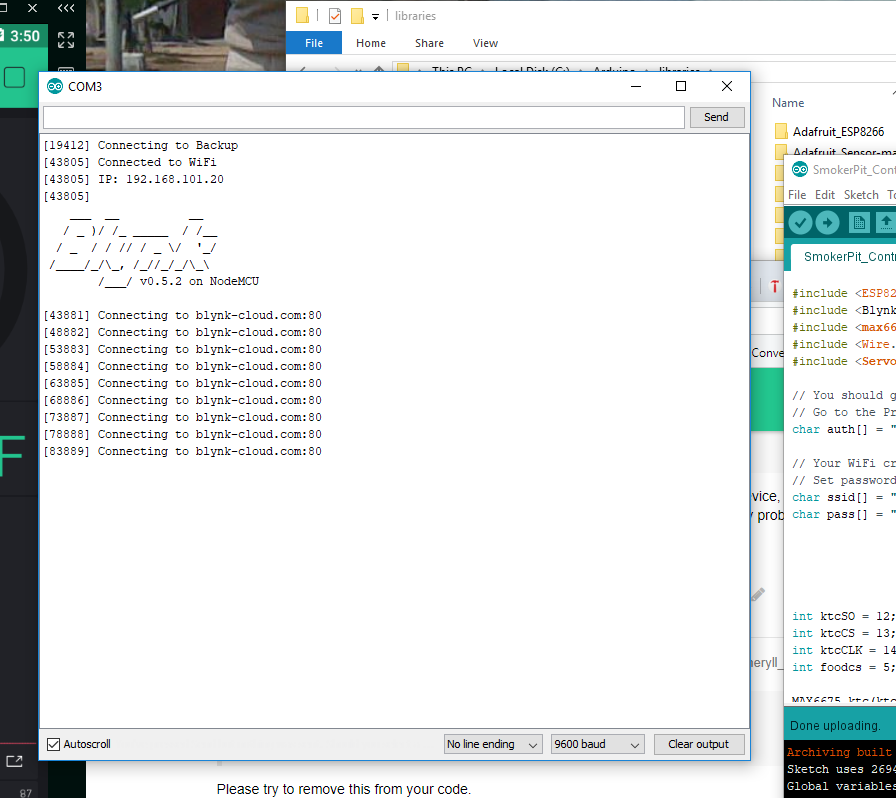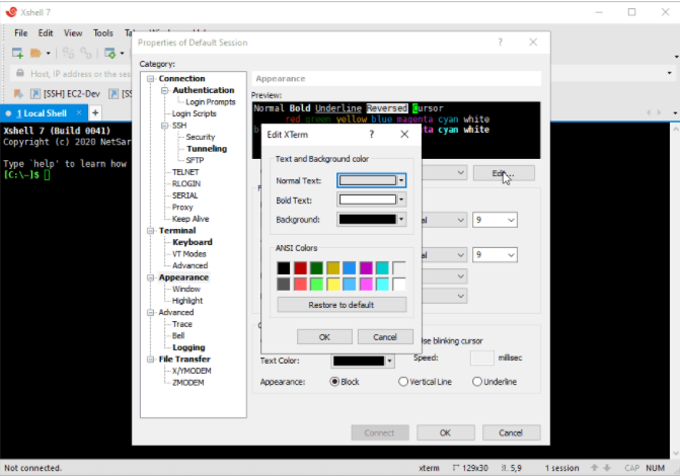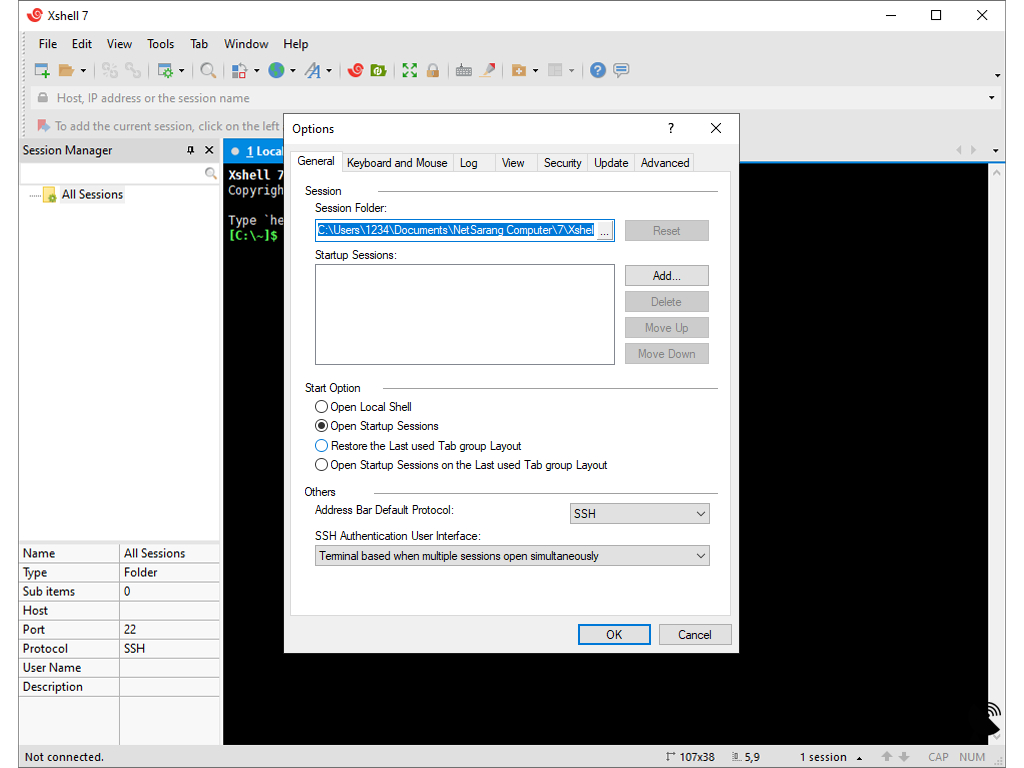SSH Raspberry Pi IoT Projects - Your Remote Control Guide
Have you ever wished you could keep an eye on your home gadgets or perhaps some clever automated system, even when you're not right there beside them? Maybe you have a small computer, like a Raspberry Pi, doing something clever, and you want to check in or give it new instructions from far away. Well, that's where something called SSH comes into play, especially for those little Internet of Things, or IoT, creations you might be putting together. This way, you can look after your projects from pretty much anywhere, and it feels just like they are sitting right on your desk, which is rather convenient.
Many folks are finding out that the Raspberry Pi, which is a tiny computer that doesn't cost much money, is a really good fit for all sorts of IoT experiments. It's a bit like a blank canvas for your ideas, ready to be told what to do. This guide is here to help you figure out the best ways to get remote access to your IoT devices that use a Raspberry Pi, and the good news is that there are free ways to do this. We're going to talk about everything you might need to know about getting this remote connection set up, making it work well, and keeping it safe.
Getting a handle on how to use SSH to reach your IoT devices on a Raspberry Pi from a distance truly opens up a lot of interesting possibilities. It's like having a secret pathway to your gadgets, letting you watch what they are doing, tell them to do new things, or even make certain tasks happen all by themselves. We'll go over the basics of how SSH works with your Raspberry Pi, and we'll even give you some ideas for projects that are pretty simple to start with, you know, for those who are just getting their feet wet.
- Sean Lew And Kaycee Rice
- Lawrence Odonnell Net Worth
- Picture Of London Breed Husband
- %C3%A9%C3%A4%C3%A6
- Are Sean Lew And Kaycee Rice Still Friends
Table of Contents
- What is a Raspberry Pi and Why Does it Matter for Your Projects?
- How Does SSH Help with Your Raspberry Pi IoT Projects?
- Getting Started with Remote Access for Your IoT Devices
- Are There Free Options for Remote SSH Raspberry Pi IoT Projects?
- Keeping Your Connections Safe and Sound
- What About Accessing Your Pi Behind a Router or Firewall?
- Fun Project Ideas to Try Out
- A Few Final Thoughts on Your SSH Raspberry Pi IoT Projects
What is a Raspberry Pi and Why Does it Matter for Your Projects?
The Raspberry Pi is, in a way, a very small computer, almost like a credit card in size, that has become quite popular. It's really good for making things that connect to the internet, like smart home gadgets or automated systems. The best part is that it doesn't cost a lot of money to get one, which means more people can try out their ideas without spending too much. For anyone interested in building their own Internet of Things devices, this little machine is a pretty good starting point, you know, because it's so approachable.
When we talk about "IoT projects," we mean things that connect to the internet and can send or receive information, or even do things based on that information. Think about lights you can turn on with your phone, or a sensor that tells you when your plants need water. The Raspberry Pi has all the bits and pieces you need inside it to make these sorts of things happen. It has connections for other parts, and it can run different kinds of software, making it a truly versatile tool for your ideas. So, it's pretty much a tiny brain ready for action.
How Does SSH Help with Your Raspberry Pi IoT Projects?
So, what exactly is SSH, and why do we care about it for our Raspberry Pi IoT projects? SSH stands for Secure Shell. Think of it like a very special and protected phone line for your computer. When you use SSH, you can type commands on your main computer, and those commands will actually run on your Raspberry Pi, even if your Pi is in a different room, or even a different city. It's a way to get into your Pi from another computer, but with a special layer of protection, which is very important.
- Matt Dillon Net Worth
- Beatrice Milly
- %C3%B0%C3%B0%C2%B5%C3%B1%C3%B1%C3%B0%C2%B5%C3%B0%C3%B0%C2%BA%C3%B0
- Lawrence Odonnell
- Rachel Hunter Net Worth
This secure connection means that when you are sending instructions to your Raspberry Pi, or when your Pi is sending information back to you, it's all scrambled up so that no one else can easily peek at what you are doing. This makes it a really good choice for managing your IoT devices, especially if they are doing important things or handling any kind of private information. Basically, it gives you a safe way to talk to your little computer from a distance, you know, keeping things private and sound.
Getting Started with Remote Access for Your IoT Devices
Getting your Raspberry Pi set up for remote access using SSH isn't as hard as you might think. The main idea is to make sure your Pi is ready to accept these secure connections. This often involves making a few changes to its settings and making sure it has the right software bits in place. Once you have that done, you can use a program on your regular computer to "call" your Raspberry Pi and start giving it commands, which is pretty cool.
The goal here is to make it feel like your Raspberry Pi is right there next to you, even when it's not. This means you can check on your IoT sensors, change how your smart lights work, or even get data from your projects without having to physically plug in a keyboard and screen to your Pi. It's about giving you the freedom to manage your projects from wherever you happen to be, which is a good thing for anyone with gadgets scattered around.
Are There Free Options for Remote SSH Raspberry Pi IoT Projects?
A lot of people wonder if they have to pay for this kind of remote access, and the good news is that there are indeed free ways to set up remote SSH for your Raspberry Pi IoT projects. The basic SSH tools themselves are usually free and built into most computer systems. The main challenge often comes with how your home internet connection works, especially if your Raspberry Pi is behind something called a firewall or a router that uses NAT. But there are solutions for these situations too, you know, without needing to open your wallet.
Some methods involve using services that help you connect to your Pi even when it's behind a tricky network setup. Others might use a Virtual Private Cloud, or VPC, which sounds complicated but is essentially a private section of the internet where your Pi can sit and be easily reached. This guide will help you find out about these free options and how to put them to use, so you can get the full benefit of your IoT projects without extra costs. It's more or less about finding the right path for your specific setup.
Keeping Your Connections Safe and Sound
While having remote access to your Raspberry Pi is super handy, it's very important to make sure those connections are safe. Think about it: if someone else could get into your Pi, they might be able to mess with your IoT devices or even get access to other things on your home network. So, making your remote access secure is not just a technical detail; it's a fundamental step to make sure your connected projects are safe, work well, and do what they are supposed to do. You want to avoid any nasty surprises, basically.
One of the first and most basic steps you should take is to change the default password for your SSH connection. Most Raspberry Pi setups come with a standard password, and if you don't change it, it's like leaving your front door unlocked. There are also ways to use special keys instead of passwords, which adds another layer of protection. This guide will walk you through these important security steps, helping you set up, make better, and keep safe your remote access for your IoT devices and Raspberry Pi using SSH. It's actually pretty simple to do.
What About Accessing Your Pi Behind a Router or Firewall?
Sometimes, your Raspberry Pi might be sitting behind a home router or a firewall, which are like guards for your internet connection. These guards are good at keeping unwanted visitors out, but they can also make it a little tricky to reach your Raspberry Pi from outside your home network. People often ask how to get around this for their SSH Raspberry Pi IoT projects. The good news is that there are ways to manage your Raspberry Pi remotely, even when it's behind these network protectors, so you can still check in on your projects from anywhere.
One common way involves setting up something called "port forwarding" on your router, which tells the router to send specific incoming connections directly to your Raspberry Pi. Another method might involve using a peer-to-peer (P2P) SSH connection, which creates a direct link between your remote computer and your Pi, bypassing some of the usual network hurdles. This guide will help you figure out how to set up these kinds of remote IoT access, ensuring you can manage and interact with your Raspberry Pi devices from anywhere in the world, allowing you to watch, manage, and look at the information your devices gather. It's about making sure your Pi is always within reach, you know, even when it's tucked away.
Fun Project Ideas to Try Out
Once you get the hang of using SSH to connect to your Raspberry Pi, a whole world of interesting projects opens up. For beginners, this is a fantastic way to learn and experiment with IoT technology. You could, for example, set up your Pi to be a little weather station, collecting temperature and humidity data, and then use SSH to check on those readings from your phone while you're out and about. Or, you might set up a smart light system that you can control with simple commands sent through SSH. It's really quite satisfying to see your commands make something happen far away.
Beyond simple monitoring, you can also use SSH to automate tasks. Maybe you have a watering system for your plants, and you want to tell it to water them at a specific time, or only when a sensor says the soil is dry. You can use SSH to send those instructions or check on the system's status. Some people even use their Raspberry Pi for more complex things like an AI assistant or clever home automation, and being able to access it remotely through SSH or even get a remote desktop view using VNC makes these projects much easier to manage. This guide will walk you through some of these ideas, helping you create exciting projects that build your skills and what you know. It's pretty much about bringing your ideas to life.
A Few Final Thoughts on Your SSH Raspberry Pi IoT Projects
Getting your Raspberry Pi set up for remote access using SSH is truly a valuable skill for anyone interested in Internet of Things projects. It gives you the freedom to manage your devices, run programs, or check on your systems from pretty much anywhere you happen to be. Whether you are just starting out with IoT or have some experience, figuring out how to use SSH with your Raspberry Pi will open up a lot of possibilities for how you interact with your small computers and the gadgets they control. It's a way to truly make your projects work for you, no matter where you are. So, you know, give it a go and see what you can create!

Can't connect to blynk-cloud.com:80 - Solved - Blynk Community

Download XShell 8.0.0063 for Windows - Filehippo.com

Download Xshell for Windows 11, 10, 7, 8/8.1 (64 bit/32 bit)